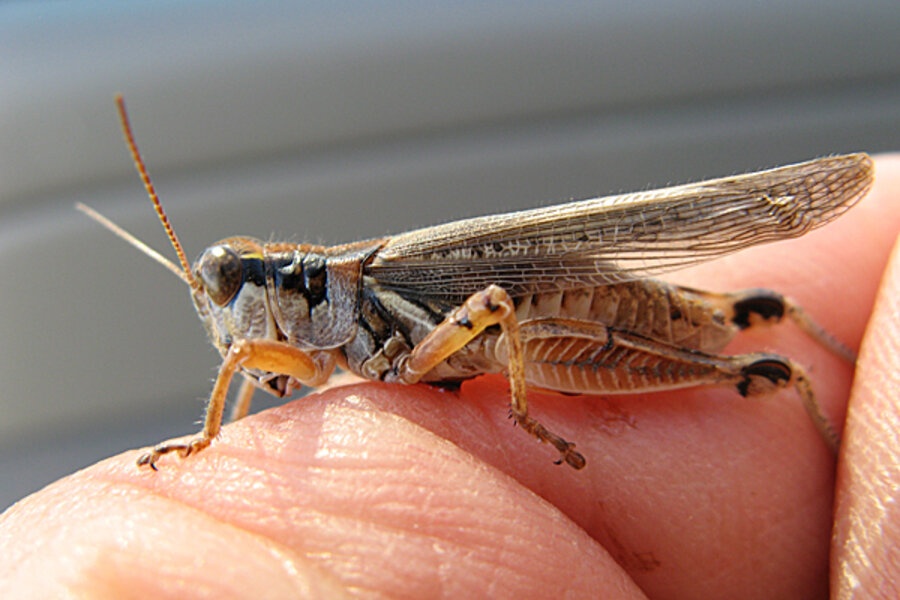Grasshopper invasion: just what Western states don't want
Loading...
They’re voracious, they’re costly, and they’re coming – again. Grasshoppers are expected to swarm Western states this summer in record numbers, gobbling up grasslands and costing cattle owners millions of dollars.
The more grass the hopping hordes consume, the less cows can eat. For ranchers, that means skinnier cattle and less money.
The US Department of Agriculture (USDA) found an unusually high number of grasshoppers in its annual survey of the flying grass-eaters last fall. If the weather is warm in the coming weeks, the countless eggs laid by the grasshopper could turn into an epic infestation across Wyoming, Montana, Nebraska, Idaho, and South Dakota.
Ranchers are already coping with a tough economy and climbing oil prices. Now, they're hoping that a cool, wet spring will wipe out many of the young grasshoppers, or nymphs, before they’re old enough to start their collective grasslands binge.
The number of grasshoppers was intolerably high last year, says Kim Baker, a rancher in Hot Springs, Mont., and president of the Montana Cattlemen’s Association. But she anticipates even more this summer.
“We’re going to get hit really, really hard,” Ms. Baker says. “A hundred or 200 grasshoppers will eat what a cow eats.”
They’ll also eat wheat, alfalfa, barley, corn, and just about anything else they hop onto. The average grasshopper is said to consume as much as 50 percent of its body weight per day. And if they’re hungry, they’ll travel miles for a good meal.
“They probably eat as much forage as anything else. So they can be very devastating,” says Dick Sackett, supervisor of the Laramie County, Wyo., Weed and Pest Council.
Although grasshoppers are a natural part of the range ecosystem and provide a good source of food for other wildlife, they become a scourge for ranchers when they reach about 15 per square yard, Mr. Sackett notes. At that point, he says, pest-control officials in Wyoming are expected to begin an aerial assault on the insects, spraying grasslands with the pesticide known as Dimilin. That prevents a young grasshopper from molting.
In Laramie County, about 60,000 acres will be sprayed, Sackett anticipates, at a cost of about $3 per acre. Wyoming’s governor recently allocated $2.7 million to spray state lands and assist local agencies in covering pesticide costs.
The grasshopper has vexed ranchers ever since ranching existed in the American West. Its numbers reach problematic proportions in waves, about every seven to 10 years. An outbreak could be brought on by several warm, dry seasons that provide a fertile environment for grasshoppers.
Some of the worst infestations have been chronicled in Western lore. In 1938, according to Montana The Magazine of Western History, “clouds of migrant hoppers came riding the wind from the southeast." It adds, "They boasted populations of between 40 and 500 hoppers per square yard.”
In the years since, there has been something of a war on grasshoppers, pitting farmer against insect. In the 1980s, a grasshopper outbreak was so bad that it compelled the US government to begin a grasshopper management program within the USDA.
Charles Brown, who manages that program, recently told the Associated Press that this time around, "We may see some of the most severe grasshopper outbreaks that we’ve seen in nearly 30 years.”





